With coconut-cream-infused rice, glowing ripe mango slices, and a sweet coconut sauce, khao niaw mamuang, or Thai mango sticky rice, is easy to fall for. This recipe is inspired by the classic preparation (traditionally cooked in a bamboo steamer) but made differently. While some sticky rice recipes call for a strainer or cheesecloth-lined colander, this saucepan method eliminates the need for any special equipment, though we have provided instructions for using a rice cooker in case you happen to have one.
Pay attention to the type of rice you're buying. Jasmine rice and other longgrain white rice varieties won't work here. Look for Thai sweet rice, also known as glutinous rice (don't worry, it's gluten-free), at East and Southeast Asian supermarkets or online. Soaking it in the water and coconut milk mixture overnight (or while you're at work) shortens the cooking time and imbues it with flavor. If it's your first time making sticky rice, know that when you see the grains of cooked rice clumping together, it's on purpose-that's the nature of the grain and what makes it so much fun to eat.
While your rice cooks, brush up on how to cut a fresh mango. Spoon the fruit over the warm, sweet sticky rice and garnish with toasted sesame seeds and a squeeze of fresh lime.
Original Recipe from Bon AppetitPour coconut milk into a large measuring cup or medium bowl. Fill empty can with cold water and add to coconut milk, whisking to combine. Add rice, cover, and let sit at room temperature 8-12 hours (coconut cream will rise to the top as rice soaks; whisk to combine before straining). Strain rice through a fine-mesh sieve set over a bowl; reserve 3/4 cup soaking liquid.
If cooking on a stovetop: Choose a large saucepan with a lid. Spread a clean kitchen towel on a work surface and place lid in the center, handle up. Tie 4 corners of towel together on top of lid (you've just turned the lid into a special airtight steam absorber that prevents the rice from getting gummy). Bring rice, sugar, salt, and reserved 3/4 cup soaking liquid to a simmer in saucepan over medium-high heat, stirring to dissolve sugar. Reduce heat to low, cover, and cook until liquid is absorbed, 15-25 minutes-try not to lift the lid at all for the first 15 minutes. At the 15- minute mark, uncover and scrape a spoon against bottom of pan to make sure rice isn't sticking and all liquid is gone. If there's still liquid, replace lid and keep cooking.
If using a rice cooker: Combine rice, sugar, salt, and reserved 3/4 cup soaking liquid in machine's bowl and stir to dissolve sugar. Close lid and set cooker to "sweet rice" setting.
Remove from heat and let sit, covered, 15 minutes. Using a fork, break up rice (it will have taken shape of bottom of pan) and separate into smaller clumps; rice will be very sticky so it will not separate into individual grains.
Divide warm rice among small bowls. Serve with mango alongside. Sprinkle with sesame seeds, then top with lime zest and a squeeze of lime juice.

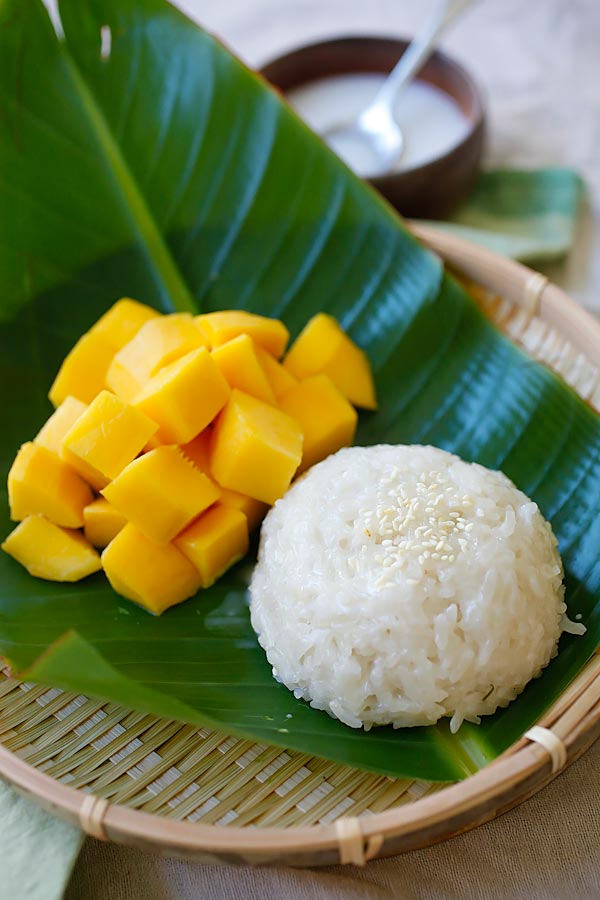
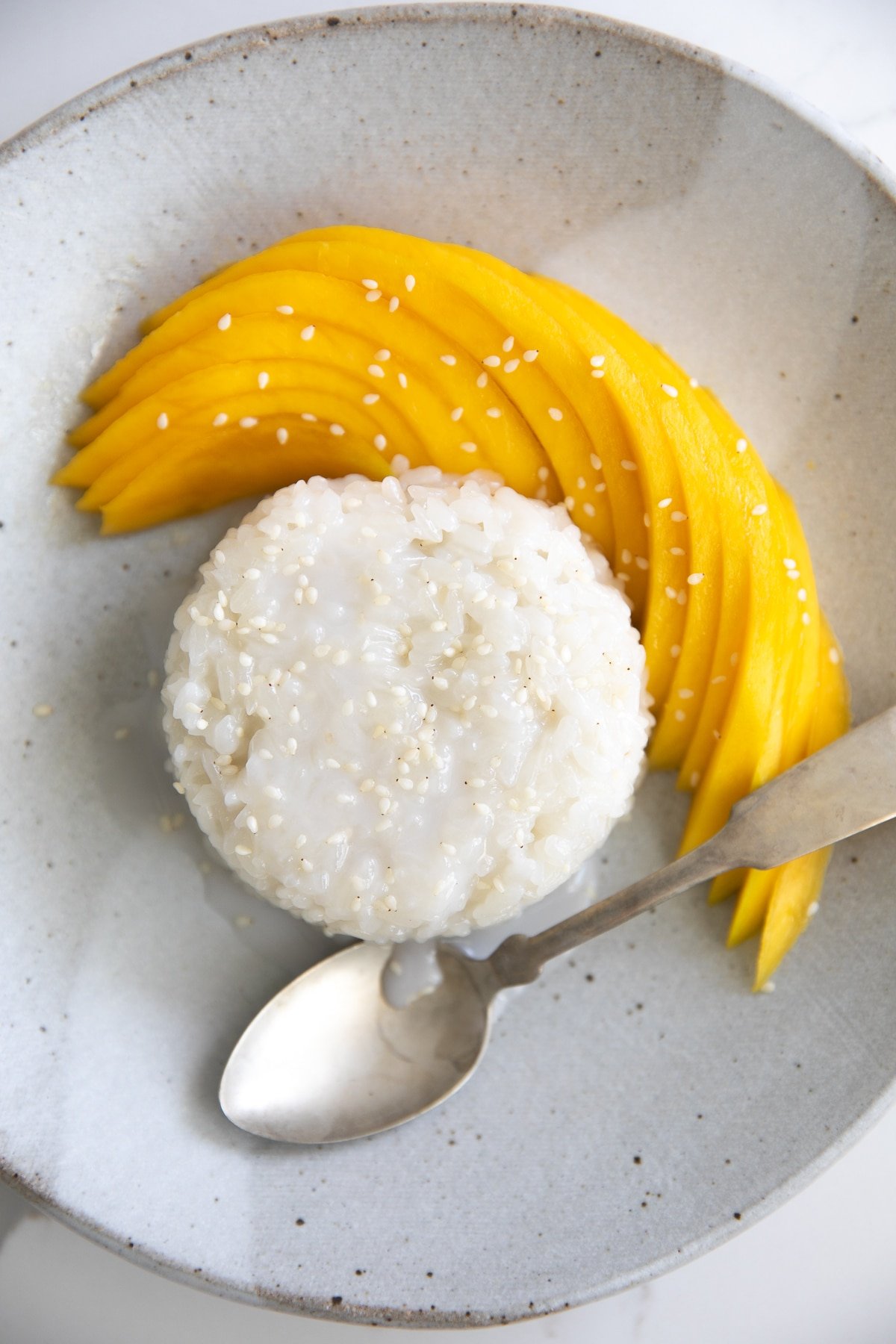

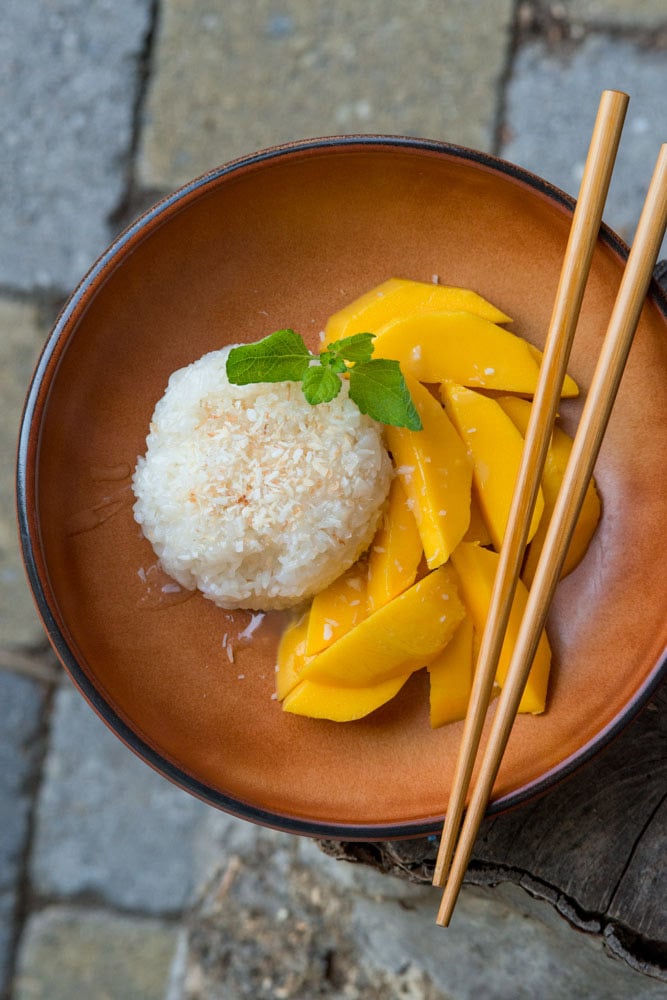

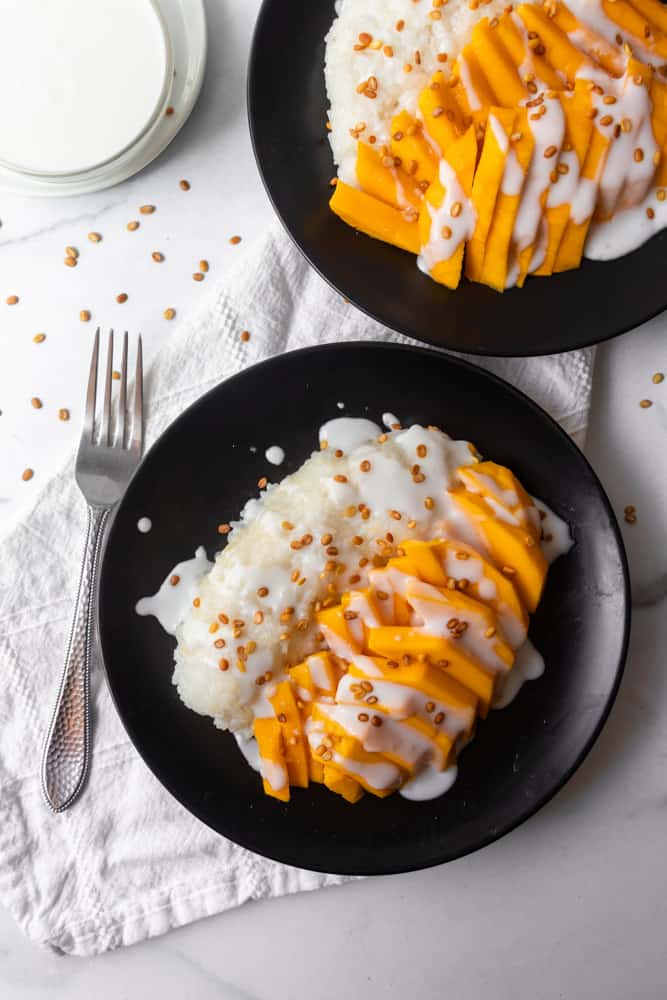
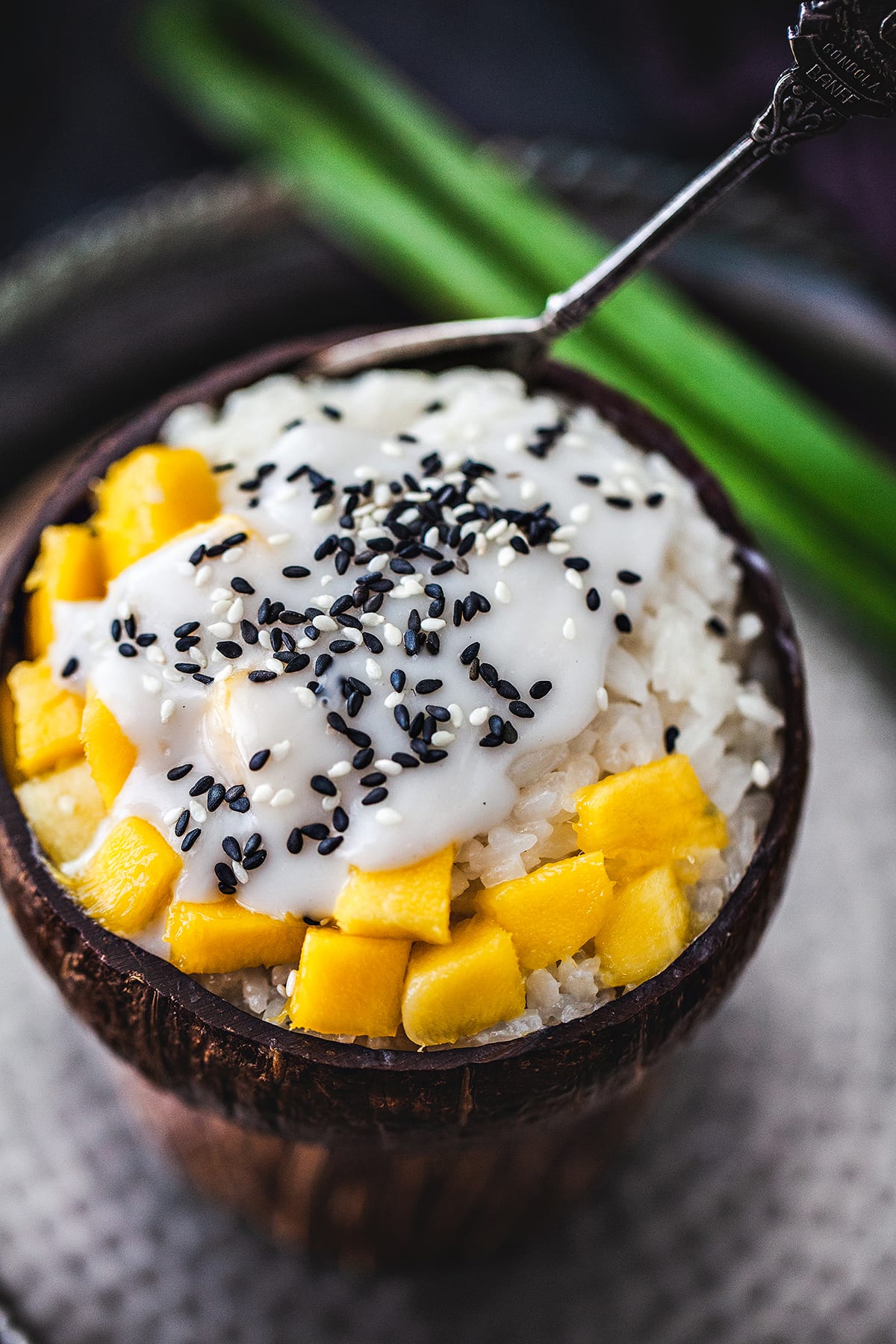
The Bon Appetit website demonstrates very effective typographic hierarchy that contributes to its readability. The separation between the estimated cooking time, ingredients, servings, and step-by-step instructions is well-defined and ensures a clear presentation of each recipe.User-generated content, such as reviews, also provides valuable feedback on recipes.
New York Times Cooking's website design is very inviting and user-friendly. For example, the "recipe of the day" feature is a fun and exciting way users can look forward to discovering a new recipe. Additionally, the thoughtful categorization of recipes into trending, latest, and top searches adds a well-organized and appealing element to the site.
Delish's website showcases high-quality food photography. These clear and appetizing photos help users decide what to cook. Additionally, having related recipes displayed at the bottom of the page encourages exploration by allowing users to find new and exciting recipes that align with their interests.
Pinterest's grid-based design creates an engaging and immersive experience. It's easy to navigate, and users can quickly understand how to save, organize, and discover content.
The Vivienne Westwood website stands out to me for its visual appeal because it features a diverse range of elements that include videos, scrolling text, and an animated photo gallery on its homepage. Despite there being so many components, they work well together as a cohesive design system.
The Atlantic is a good example of a content-rich website that uses a minimalist approach to design and layout, emphasizing whitespace over clutter.The multi-column layout also effectively organizes news articles into different categories.